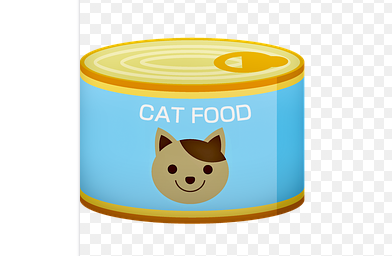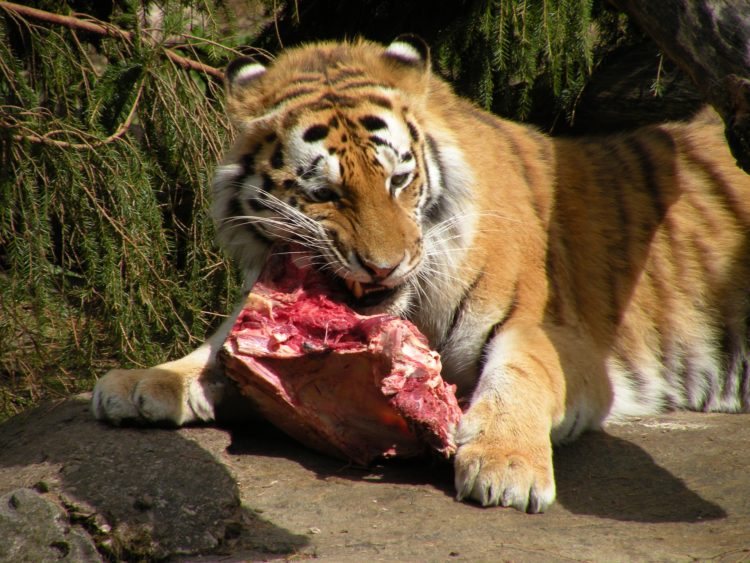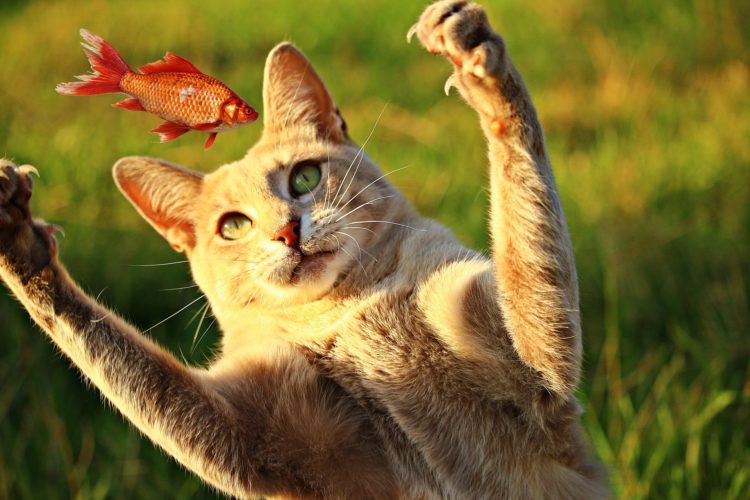Why should I switch my cat from dry to wet food?
More evidence has emerged linking dry food diets and Feline Lower Urinary Tract Disease (FLUTD), among many other serious health problems.
A study was conducted at The Hebrew University of Jerusalem’s Koret School of Veterinary Medicine to evaluate urethral obstruction (UO), which is an extremely common, life-threatening condition in cats.
The urethra is a small tube through which urine flows from your cat’s bladder to the outside of the body.
Urethral obstructions are usually mineral crystals or stones, or plugs of inflammatory material that form in the kidneys (a process known as urolithiasis), pass down into the bladder, and get stuck in the urethra, blocking the passage of urine from the body.
Male cats have a longer, narrower urethra than females, so obstructions occur more often in males.
Once a blockage develops in the urethra, the kidneys continue to produce urine and the urine starts building up in the bladder.
This is not only painful for the cat, it can also quickly interfere with kidney function.
The job of the kidneys is to flush waste from the body. When they aren’t working properly, toxins accumulate in the bloodstream.
Feline urethral obstructions, if not treated promptly, can result in death in a matter of days.
Risk Factors for Urethral Obstruction in Cats
According to many, no research to date has nailed down precisely the risk factors involved in the formation of urethral plugs in kitties.
Some reports indicate certain breeds are predisposed to stone formation. These include Persians, Himalayans, Russian Blues Siamese, Birman and the Egyptian Mau.
A cat’s environment may also carry risk factors for diseases of the lower urinary tract, specifically stressful living conditions, living indoors only, obesity, a sedentary lifestyle, and spaying/neutering.
For some reason, most studies don’t emphasize a dry food-only diet as a significant risk factor for development of feline lower urinary tract disease, including urethral obstruction.
I find this absolutely mystifying, given what we know about the crucial role dietary moisture content plays in feline physiology.
The Jerusalem Study
The Jerusalem study, published in the Journal of Feline Medicine and Surgery, took another look at risk factors for urethral obstruction, clinical signs, outcomes and recurrence rates in 82 cats with UO and 82 control cats.
The kitties diagnosed with urethral obstruction had some interesting things in common, including:
They were significantly younger than the control cats; 82 percent were between 1 and 7 years old.
They were significantly heavier.
More were indoor-only cats than in the control group.
And most were fed dry food only (68 out of 82, or 83%).
Only 14 ate a combination of wet and dry food and exactly none were fed a diet of wet food only.
In the control group of 82 cats without urethral obstruction, who also happened to be older and leaner than the sick cats, a little over half were fed dry food only, 42% ate both wet and dry food, and 3 out of 82 were fed only wet food.
An Earlier Enlightening Study
Another very interesting study(*1) conducted several years ago measured the effect of feeding a specific type of food (designed to increase the acidity of urine) to cats with feline idiopathic cystitis (FIC). FIC is another of the diseases of the lower urinary tract.
Some of the cats were fed a canned formulation of the food, and some were fed a dry formulation.
The result?
After 1 year on the canned food, only 11% of FIC cats had a recurrence of the condition.
Recurrence in the dry food group after a year was 39%.
This Waltham Centre for Pet Nutrition conducted this study. Since Waltham is a pet food company(*2), it’s safe to assume the primary intent of the study was to find a product that could be sold specifically for cats with lower urinary tract disease.
In my opinion, what was important in this outcome wasn’t the urinary acidifying feature of Waltham’s formula — it was how much better the canned food fed cats fared than the poor kitties fed the dry formulation of the same food.
Why Isn’t Dry Cat Food Being Clearly Identified as a Risk Factor for FLUTD?
The Waltham study was published in 1999. The Jerusalem study was published just last year a dozen years later. Several other studies on the subject of feline lower urinary tract disease have been conducted in the meantime.
And yet many in the traditional veterinary community seem unwilling to acknowledge the clear evidence that dietary moisture is incredibly important to urinary tract health in cats.
We know how felines’ renal systems work and how they live in the wild. And we have multiple studies showing cats with lower urinary tract disease, in particular, benefit from high moisture content diets.
It is absolutely baffling to me why more veterinarians aren’t strongly encouraging all their cat-owning clients to transition their pets away from dry diets in the direction of food with a high moisture content.
For example, at a veterinary internal medicine symposium in 2011, an associate professor at the UC Davis School of Veterinary Medicine presented a paper titled, Risk Factors in Feline Lower Urinary Tract Disease(*3). She cited both the Waltham and Jerusalem studies (and 19 others).
Here is an excerpt from her conclusion/recommendation:
“For both cats with urolithiasis and those with FIC, a diet high in moisture may be best, assuming the owner is willing to feed it and the cat is willing to eat it. A high moisture diet is recommended for cats with stones to decrease the urine concentration of mineral precursors and is the cornerstone of therapy for urolithiasis in human and veterinary medicine. Increasing the water content for cats with FIC may help improve clinical signs by encouraging frequent voidings.”
This isn’t my idea of a ringing endorsement for the benefits of feeding FIC cats high moisture content diets.
But she does, at least, follow up with this suggestion:
“Increasing water content in the diet can be achieved most easily by feeding a canned diet; the canned food should be placed in a separate container next to the cat’s regular diet. If the canned food is not consumed, water can be added to the dry kibble to achieve higher moisture content, although 85% moisture is difficult to attain using this method.”
And I was also encouraged by this comment on the Jerusalem study by Dr. Indu Mani, Editor of Clinician’s Brief:
“This study is very useful to the practicing clinician. Cats with UO are common in the clinical setting. Any interventional behaviors or techniques to potentially decrease UO prevalence are welcome in the clinical setting. Emphasis on optimal body weight and canned food intake as treatment recommendations is important in the management of many chronic feline diseases.” Indu Mani, DVM, DSc
Why Your Cat’s Food Should Be Loaded with Moisture
Water is essential for all life forms.
Your cat doesn’t have a strong thirst drive compared to other species. Kitties are designed to get almost all the water they need from the food they eat.
Healthy cats don’t lap up water like other animals do.
Many kitties love moving water, of course. But they’re more interested in watching it or playing in it than drinking it.
With very few exceptions, only cats with underlying disease will drink a lot of water.
Often the disease involves their lower urinary tract, especially if they are suffering from chronic, moderate dehydration thanks to a primarily dry food diet.
Cats in the wild hunt prey, and prey consists of about 75 percent water.
Canned cat food contains at least that much moisture. Dry food, on the other hand, contains only about one tenth of that amount.
If you’re feeding your kitty mostly dry food, he’s probably drinking more water than he would if his diet was high in moisture content. But as a general rule, cats on dry food diets consume only about half the water cats on moisture-rich diets consume.
Now think for a minute about your cat’s lower urinary tract, specifically the bladder and kidneys.
These need flushing constantly with adequate quantities of urine.
It’s easy to imagine the growing stress on those vital organs when your kitty’s body is operating on half the amount of water it requires to function normally day in and day out, for months, years, or a lifetime.
A Word about Other Risk Factors for FLUTD/UO
The key finding from the Jerusalem study shows that the majority of cats who developed urethral obstruction ate dry food only. In addition, obesity and indoor living were also significant factors.
Living indoors doesn’t have to be unhealthy for cats, and in fact, your kitty is much safer living inside. But housecats do need environmental enrichment to be optimally healthy.
The following articles offer some great tips on how to make your environment feline-friendly:
- Your Cat’s Life in Captivity — How to Simulate Conditions of the Wild
- Stress Busters for Kitties
- Reasons for Sick-animal Behavior in Healthy Cats
- Obesity in cats tends to go hand-in-hand with a sedentary lifestyle and a dry food diet, especially if your kitty enjoys an all-day all-he-can-eat buffet (also known as free-feeding).
If your cat is overweight, it’s really important for his overall health and quality of life that he slim down.
However, do it very, very gradually to avoid a life-threatening case of hepatic lipidosis. My Valuable Tips for Helping Your Heavy Cat video and article gives you all the information you need to diet your kitty safely.
REFERENCES:
*1 Journal of the AVMA, 1999 Feb 1;214(3):361-5
*2 Waltham
*3 Risk factors in feline lower urinary tract disease, Jodi L. Westrop, DVM, PhD, DACVIM
Source: Clinician’s Brief April 12, 2011
Source: Journal of Feline Medicine and Surgery, 2011 Feb;13(2):101-8
* Printed here by permission from Dr. Karen Becker with MercolaPets.com
,
Recommended for you! Cat lovers also enjoyed these popular posts:
10 General Tips to Take Care of Your New Cat
3 Simple Steps to Get Cat Pee Smell Out of Your Carpet
The Causes, Symptoms and Solutions for Cat Hairballs








Leave a Reply